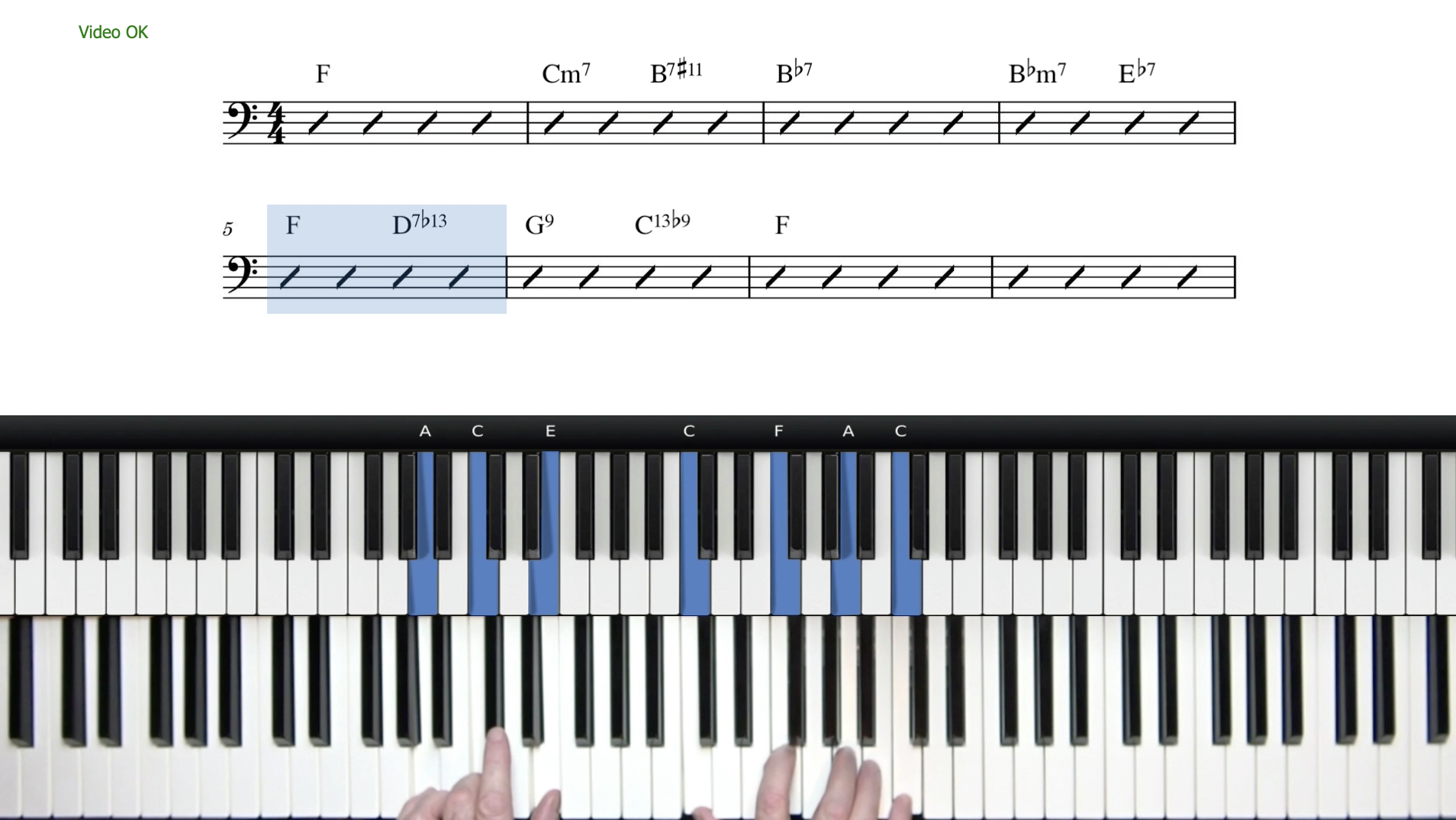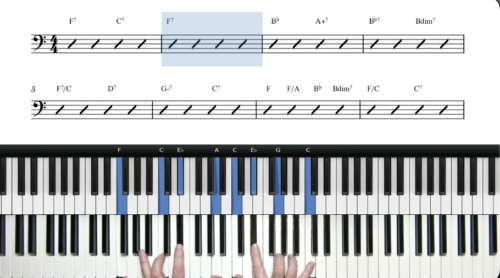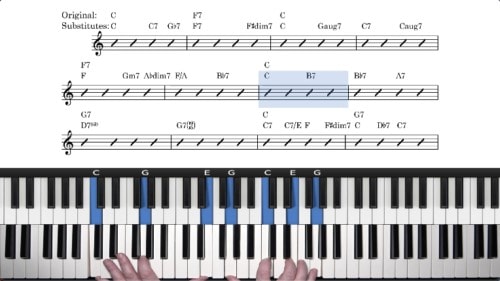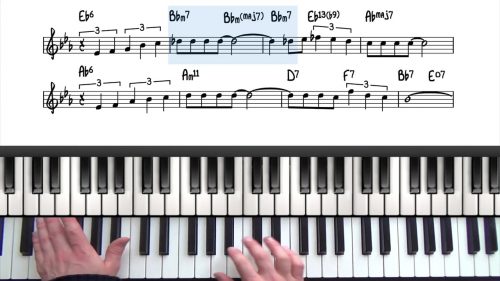8 Bar Blues Reharmonisations
In the previous lesson we looked at introducing some substitutions into the first 4 bars of the 8 bar blues and we will now explore some reharmonisations for the rest of the form.
The second half of the form consists of just two chords – it goes from F to C7 and back to F. In its basic form this is very simple but there is a lot you can do in this space.
The 1625 Progression
In bars 5 and 6 we can introduce a 1 6 2 5 progression to add some more colour and movement. In its basic form, the 1625 progression is plain-sounding so we can add some extensions and alterations.

The alterations are used to dress up the the voicings so that we create a melody that moves through the chords. To take it one step further we can arpeggiate these chords and add some passing notes to move between chords.
Adding Chord Alterations
Chord alterations can be used to great effect over dominant chords to add additional colour and tension. Here are some altered variations of a C7 chord:

Turnaround Reharmonisations
To add some interest to the last two bars of the form we can add a Bb chord to the seventh bar and dress that up to become a colourful Bb13#11 chord. Alternatively we could add a descending progression to these last two bars to take us back to F at the beginning of the form. Starting at Am7, we then move to Abm7, Gm7 and finally Gb7 which resolves beautifully back to F.
Lesson Downloads
-
Reharmonisation Chord Chart File Type: pdf
-
Bars 5 to 8 Reharm Voicings File Type: pdf
-
Demonstration 1 File Type: pdf
-
Demonstration 2 File Type: pdf
Practice Tips
-
Jon plays a lot of subtle variations when he moves through this form. Choose just one way of playing this 8 bar blues and gradually add in variations as it becomes more comfortable under your fingers.
-
In both bars 5 & 6 and 7 & 8 Jon uses variations on a 1 6 2 5 progression. If you are familiar with chord substitution in a jazz context you could create your own reharmonisation.
-
All of the substitutions in this lesson can be used in other situations. They are easily applicable to the 12 bar blues but also can be applied to other tunes.









These 8 bar blues lessons are excellent and I love the sound that these substitions give. What are some examples of songs that use these substitutions?
Hi Dean,
Likewise I’m a huge fan of this sound and it’s something that I have been incorporating into my own playing and teachings.
For songs where you can find similar voicings and harmonic techniques check out the following lessons and their associated courses:
“Misty Cocktail Piano Improvisation” course: pianogroove.com/jazz-piano-lessons/chromatic-lines-motifs/
“Bluesy Stride Georgia On My Mind Course”: pianogroove.com/jazz-piano-lessons/how-to-play-10th-intervals/
“Jingle Bells Reharmonised”: pianogroove.com/jazz-piano-lessons/christmas-song-improvisation/
This style of playing can be applied whenever we have 1625 and 3625 progressions, and so the above lessons and associated courses will give you some inspiration. I’m working on more lessons in this style so lots more to come.
Let me know if I can help further and enjoy the lessons!
Cheers,
Hayden